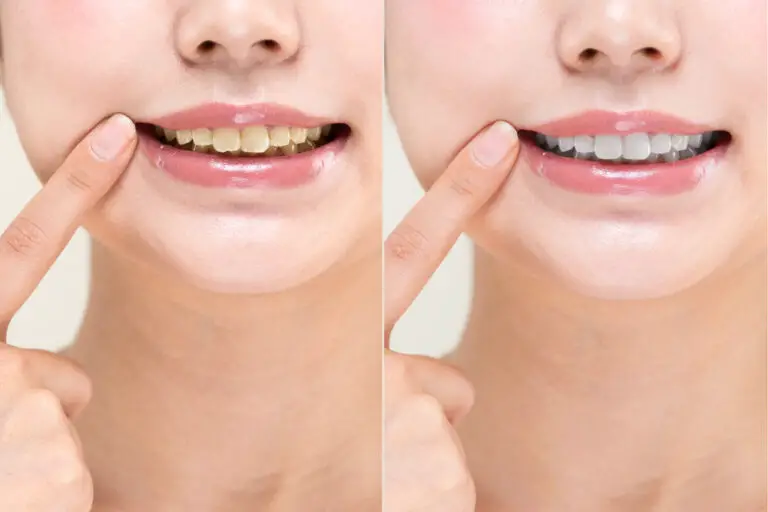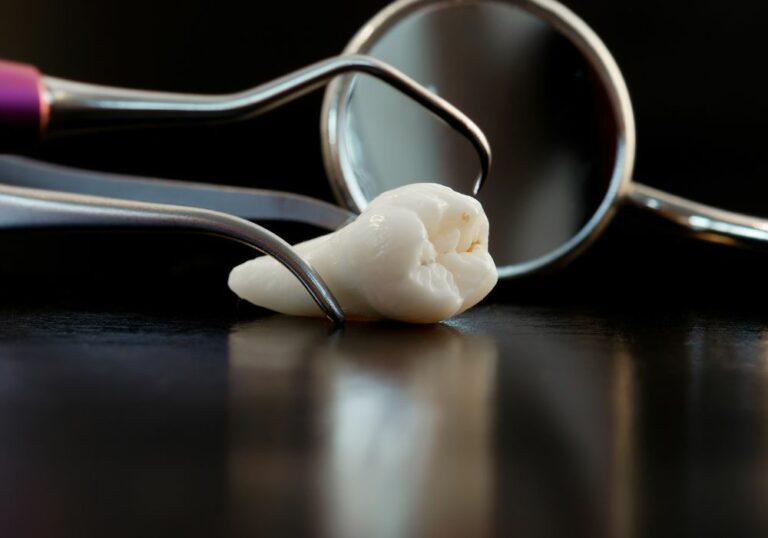Braces, also known as orthodontic braces or dental braces, are devices used in orthodontics that help align and straighten teeth and correct bite issues. While braces are commonly associated with cosmetic dentistry today, they were originally developed out of medical necessity.
A brief history of braces
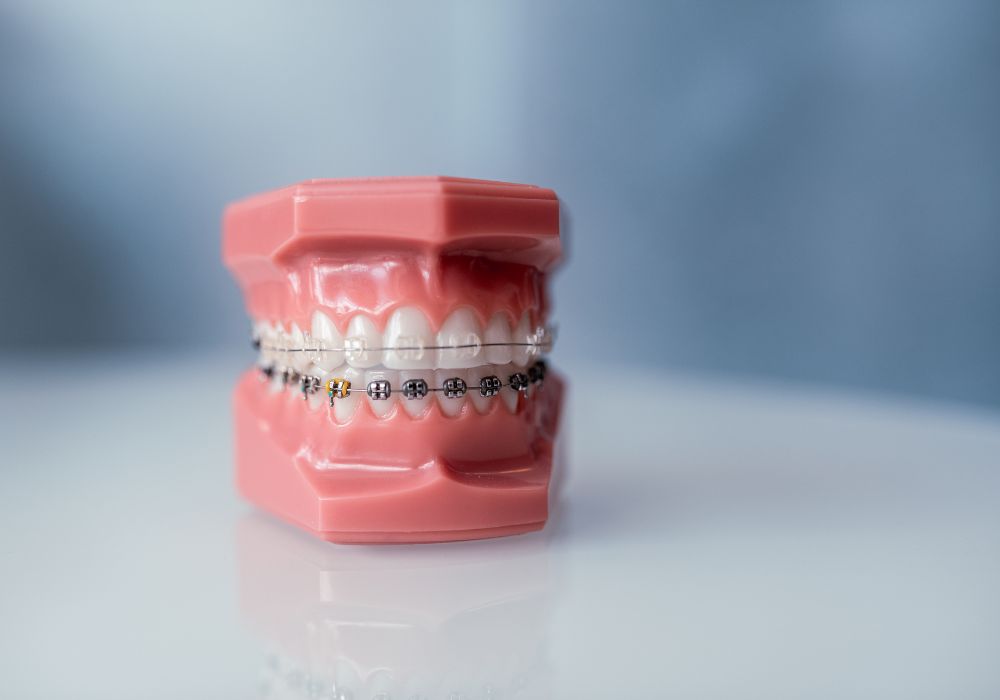
The origins of braces date back thousands of years, with examples found among ancient civilizations. However, braces as we know them today were pioneered in the 1700s and 1800s as dentistry evolved as a medical practice.
Early teeth straightening methods
Archaeologists have discovered evidence that people were concerned about having straight teeth even during ancient times. Various early civilizations, including the Etruscans, Egyptians, Greeks, and Romans, have been found to use crude metal bands and catgut wire to stabilize loose teeth and bridge gaps from lost teeth. These devices were mainly designed to improve chewing and speech rather than appearance.
The desire for straight teeth also existed in early modern Europe, but methods remained relatively primitive. Barbers often served as part-time dentists and would file down and reshape teeth to make them fit together better. However, these practices were extremely painful and not very effective.
The birth of modern orthodontics
In 1728, the French dentist Pierre Fauchard published a seminal book on dentistry called The Surgeon Dentist: A Treatise on Teeth. For the first time, a scientific approach was applied to dentistry and teeth straightening. Fauchard introduced the use of a device involving a spring and a flat strip of metal to expand the dental arch and align teeth.
In the late 1700s and early 1800s, dentistry was establishing itself as a true medical profession. Advances were made in understanding the biology and mechanics of teeth and the structures supporting them. As dental knowledge grew, so did development of better braces.
Some key innovations included:
- 1771 – French dentist Étienne Bourdet was the first dentist to recommend extraction of premolar teeth to relieve crowding and improve alignment. This practice made space for remaining teeth to be straightened.
- Early 1800s – Doctors began using extracted teeth attached together with metal bands and screws to fill gaps from lost teeth and stabilize loose teeth. These were precursors to contemporary fixed braces.
- 1819 – Delabarre introduced the use of precious metals such as platinum to craft dental appliances. This was more comfortable and durable than crude iron.
- Early 1800s – Armand Limberton pioneered a method of resetting teeth using carefully shaped gold wires cemented to each tooth. This was the early concept for modern braces.
- 1843 – American dentists Horace Wells and John Ruggles used strips of gold and bands of platinum to create braces with precision attachments called “tongs.”
- 1847 – Gum elastics were first employed to align teeth. Elastic materials are still used in orthodontics today.
- 1850s – Rubber vulcanite was adapted from the rubber industry for use in dental appliances and braces.
- 1864 – Sanford Christie Barnum invented the ivory prosthetic dental bridge using plates to replace lost teeth. This established the concept of using prostheses to achieve desired dental arrangement.
- 1880s – Norman Kingsley published an influential text on dentofacial orthopedics, establishing dental braces as a scientific practice.
- Late 1800s – Advances in materials led to wide usage of nickel-steel wires, aluminum, and gold chain linked retainers.
By the mid-1800s, significant advances had been made in materials and methods for straightening teeth, establishing the foundation for contemporary orthodontic braces.
Factors driving adoption of braces for cosmetic dentistry
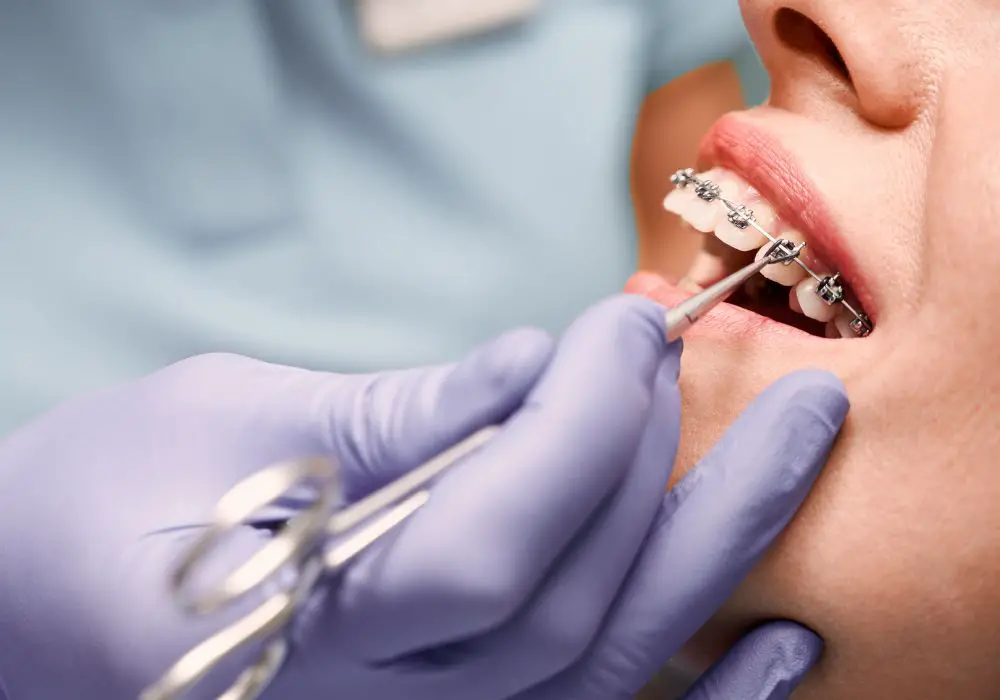
While early teeth straightening methods were rooted in functional medical necessity, several cultural and technological factors contributed to braces becoming a desirable cosmetic treatment and fashion symbol by the late 20th century:
Rising popularity of cosmetic dentistry
As dentistry advanced and became more widely accessible in the 1900s, cosmetic dentistry focused on enhancing one’s smile and appearance grew in popularity. Having straight bright white teeth was increasingly seen as attractive. Braces offered a way to achieve the perfect Hollywood smile.
Improved materials and techniques
Newer types of metal alloys, innovations like steel wires, controlled force mechanisms, and use of X-rays allowed orthodontists to work faster and more effectively with braces. Treatments became less painful and cumbersome compared to early iterations, driving up demand.
Youth counterculture of the 1960s and 1970s
Braces became a way for youth of this era to rebel against traditional conservative values of previous generations that favored conformity. Obtaining braces was a response to strict rules regarding appearance and a way of establishing their identity.
Rise of consumer culture and emphasis on image
Modern consumer culture placed greater emphasis on image and appearance as markers of social status. Having straight teeth was associated with wealth and beauty. Braces were embraced as a status symbol and cosmetic enhancer rather than just for functional needs.
Growth of cosmetic dentistry industry
Advances in cosmetic dentistry led to development of teeth whitening, veneers, implants, and other elective treatments. Braces complemented these offerings as a pathway to an ideal smile. More dentists began offering braces and promoting their cosmetic benefits.
Improved access to orthodontic treatment
As dental insurance coverage expanded in the mid-1900s, braces became affordable to more patients beyond just the wealthy. This increased demand significantly. Additionally, innovations like installment plans made braces accessible for lower income families.
Key uses and benefits of braces in dentistry today
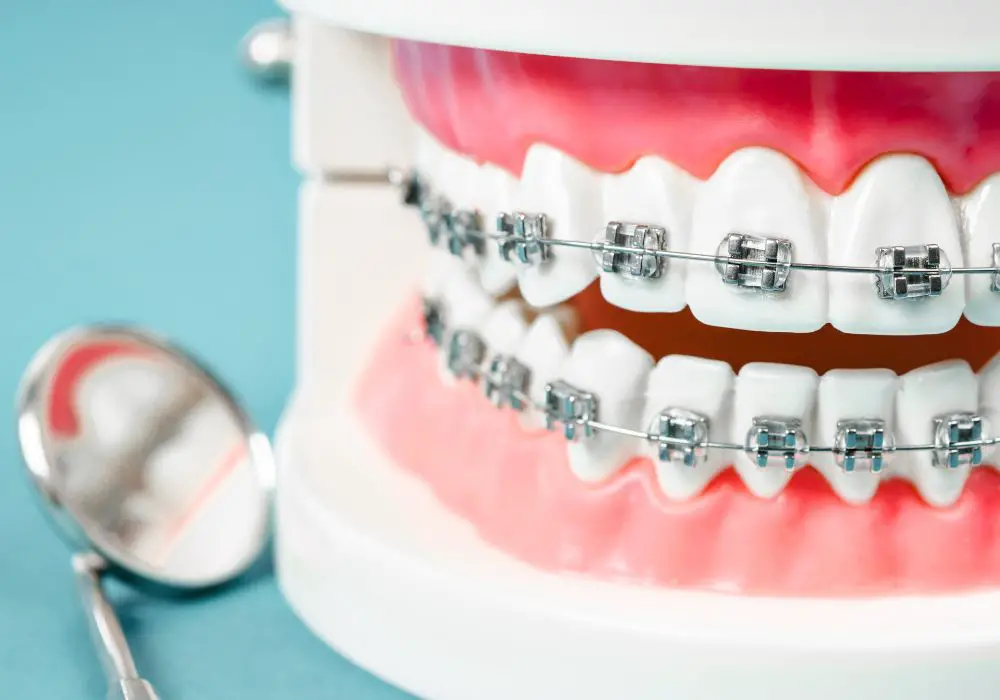
While braces may have become a popular cosmetic dental treatment, they still serve critical medical purposes and benefits:
Correcting misaligned teeth and improving bite
The primary orthodontic function of braces is to exert steady pressure to gradually shift teeth into proper alignment in the jaws and correct issues that can negatively impact chewing and cause jaw pain.
Closing gaps between teeth
Braces use wires to pull teeth together and eliminate unsightly gaps that trap food and make teeth harder to clean and maintain.
Reshaping jaw position
By exerting force on the teeth, braces can influence the overall growth and position of the jaw to improve alignment of the teeth and face.
Reducing risk of dental health issues
Misaligned teeth are harder to clean and maintain. Braces help straighten teeth to prevent plaque buildup and decay and allow easier flossing between teeth.
Improving speech clarity
Braces correct bite issues and gaps to allow for clearer pronunciation and speech.
Restoring teeth structure
Braces can reshape teeth to a normal, healthy size and position that may have been disrupted by broken/fractured teeth or prior dental work.
Relieving dental crowding
Braces expand the space in the mouth to alleviate crowding of teeth and allow them to align properly.
Aiding jaw growth development
In children, braces can guide jaw growth in parallel to enable teeth to fit well together.
Types of contemporary braces systems
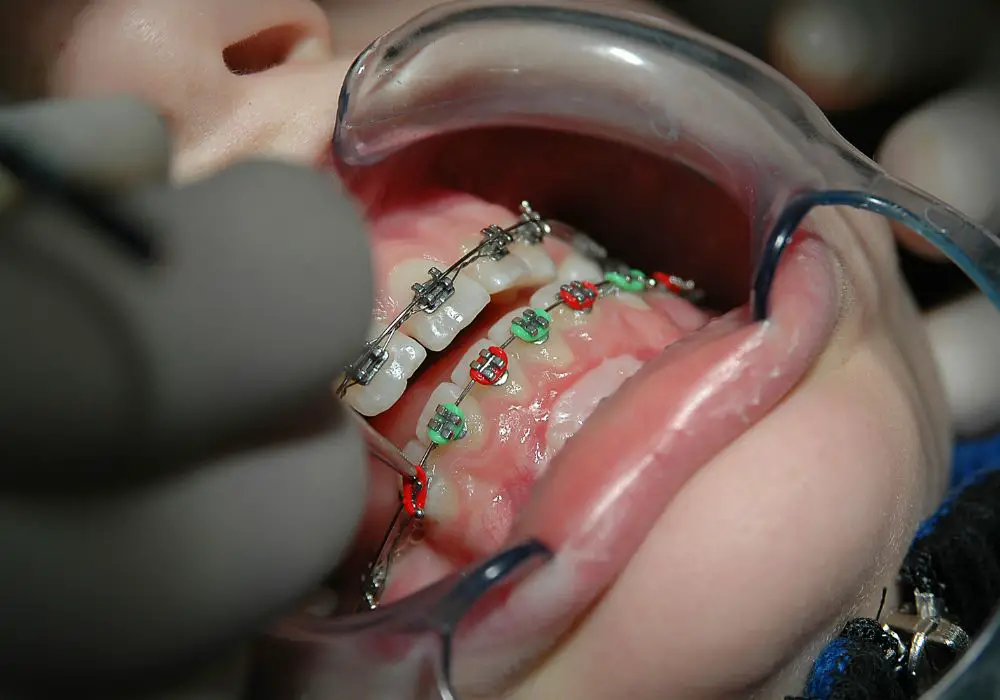
There are now a variety of orthodontic systems and methods available to suit different budgets and lifestyles:
Traditional metal braces
- Description: Brackets cemented to each tooth with archwire threaded through to guide teeth into position. Typically utilize metal brackets and archwire.
- Process: Adjusted every 4-6 weeks with tightening of wires as teeth shift. Total treatment times average 1-3 years.
- Maintenance: Require good oral hygiene to prevent plaque buildup on brackets. Avoid very hard/sticky foods that can break brackets with diet modification.
- Cost: Around $3,000 – $7,500 but varies based on extent of treatment needed.
Ceramic braces
- Description: Similar to metal braces but with brackets made from ceramic/porcelain blend for a more discrete look. Archwire still metal.
- Process: Same process as metal braces in terms of adjustment schedule.
- Maintenance: Require the same level of care and maintenance as metal braces.
- Cost: Around $4,000 – $8,000 on average. More expensive than metal.
Lingual braces
- Description: Customized brackets bonded to the backside of teeth rather than front surfaces. Nearly invisible.
- Process: Higher degree of customization means longer timeline of 6-24 months for application and adjusting. Total treatment times similar to metal braces of 1-3 years.
- Maintenance: More difficult to brush and floss with braces on inner surfaces of teeth. May require specialized tools.
- Cost: Around $8,000 – $10,000 due to extensive customization.
Clear aligners (ex. Invisalign)
- Description: Series of clear removable plastic aligners worn sequentially to shift teeth. Most discreet option.
- Process: New aligner set issued every 1-2 weeks over total treatment timeline of 12-18 months typically. Can be removed for eating and cleaning.
- Maintenance: Aligners should be worn 20-22 hours per day. Specific cleaning and maintenance regimen.
- Cost: $3,000 – $8,000 range depending on complexity of case.
Gold braces
- Description: Brackets connected by gold archwires. Most expensive and luxurious option.
- Process: Similar timeline as metal braces. Gold is softer and more flexible than steel.
- Maintenance: Require diligent oral hygiene and care to avoid damage.
- Cost: Around $10,000 – $20,000 for gold archwires due to high material cost.
The future of braces and clear aligners
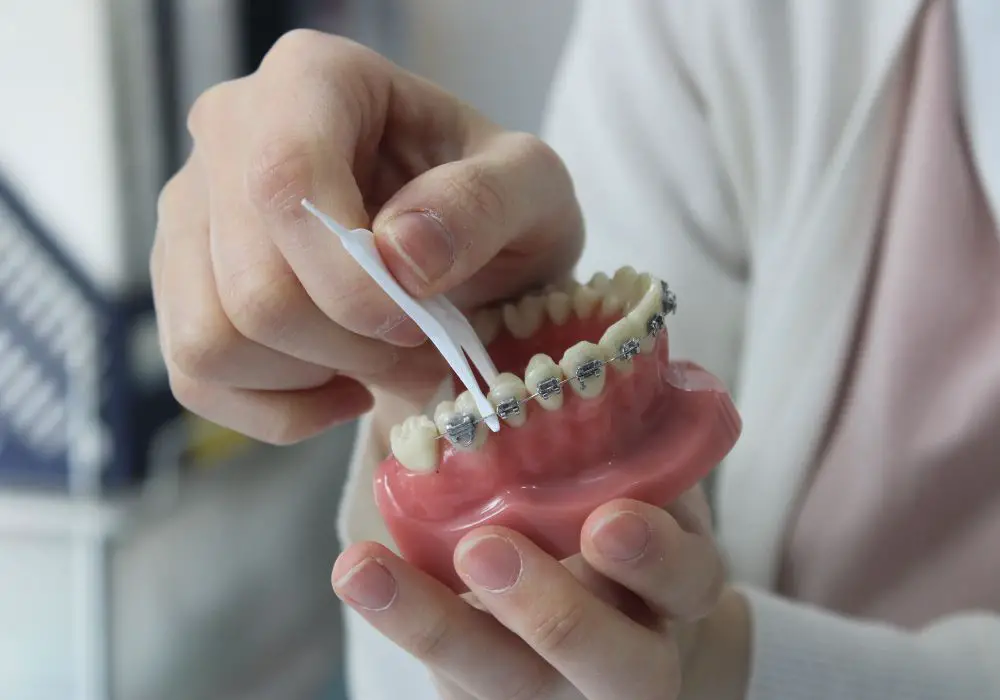
Clear aligner systems like Invisalign have surged in popularity in recent years, but traditional braces remain the most effective treatment for complex orthodontic cases. Advancements in materials and 3D printing are expanding possibilities for more subtle and customized braces systems.
Some emerging trends and technologies include:
- Clearer ceramic brackets and archwires for a more discrete look with traditional braces.
- Use of titanium alloys and plastics like Teflon that are lighter while still providing precision control.
- 3D printing technology allowing for customized brackets and wires tailored to a patient’s specific tooth anatomy and orthodontic needs.
- New clear aligner materials that more closely mimic the light reflecting properties of natural teeth for nearly imperceptible aligners.
- Increased use of digital scans, planning software, and 3D printing to develop better fitting and more efficient clear aligner treatment plans.
- Lingual expanders that are temporarily bonded behind teeth to gain space needed for alignment.
- Temporary anchorage devices (TADs) implanted in the jawbone to provide enhanced anchoring and control during the alignment process.
- Micro-osteoperforation techniques using lasers or tools to loosen gum tissue and accelerate teeth movement with aligners.
- Early prevention and interceptive orthodontics for children to reduce need for braces later.
While how braces look and are fabricated may evolve over time, improving dental health, function, and appearance will remain the core focus of orthodontic braces.
Frequently Asked Questions
What were some of the earliest attempts at teeth straightening?
Some of the earliest evidence of teeth straightening dates back thousands of years to ancient civilizations like the Egyptians and Romans that used crude metal bands and catgut wires to stabilize teeth. In 18th century Europe, barbers often filed teeth to better fit together. These early techniques were very rudimentary and focused on function rather than appearance.
When did braces start to look more like they do today?
In the late 1700s and early 1800s, advances in materials like precious metals and progress in understanding dental anatomy and science allowed dentists to develop more modern orthodontic devices. Dentists like Delabarre and Limberton pioneered methods using gold wires and bands cemented to teeth to precisely align teeth for the first time.
Were braces originally used for aesthetic reasons?
No, originally braces were used to correct functional issues with chewing, speaking, and dental health. They were primitive and painful. With the popularization of cosmetic dentistry in the 20th century, braces then became a desirable aesthetic treatment to achieve the perfect Hollywood smile.
What made braces popular for teens in the 1960s/1970s?
Braces aligned with youth counterculture and desire to rebel against conservative values of conformity and strict rules governing appearance. Getting braces was a way for teens to express their identity and individuality in response to societal norms they were pushing back against.
How have materials for braces changed over time?
Early braces utilized painful materials like iron bands and catgut wires. In the 1800s, advances were made utilizing gold, platinum, and porcelain. Contemporary braces use high grade stainless steel, titanium alloys, ceramics, and clear plastics for a more comfortable process and discreet look. 3D printing enables further customization.
What new innovations are shaping the future of braces?
Some key innovations shaping braces of the future include use of 3D printing for customized components, new clear materials for nearly invisible aligners and brackets, temporary anchorage devices implanted in the jaw, and early preventative intervention for children. Digital scanning and planning technology will also improve clear aligner treatment.
Conclusion
While orthodontic braces are now seen as a cosmetic treatment and status symbol associated with an attractive smile, they originated out of functional medical necessity. Early teeth straightening methods used crude bands and metal wires to stabilize teeth and improve chewing as dentistry evolved scientifically in the 1700s and 1800s. With technological improvements and sociocultural shifts in the 1900s favoring image, braces came to be embraced for their aesthetic benefits rather than just medical ones. Current dental braces continue to help improve alignment, health, and appearance through a variety of customized systems. Advancements in materials and 3D printing technology will likely enable more subtle yet effective braces in the future. However, helping people smile with confidence by improving dental function and orthodontic health remains the core application.

